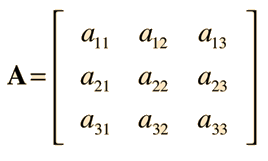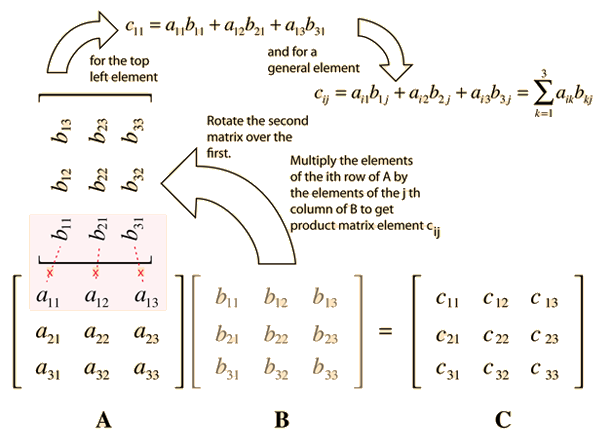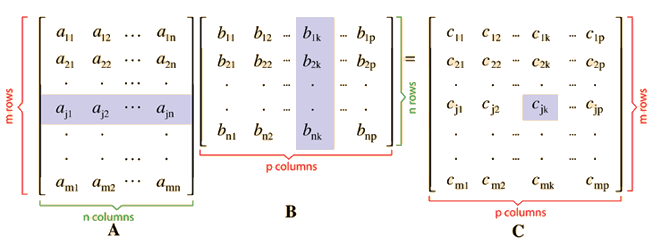Matrices
The word matrix refers to a rectangular array of elements. Matrices have utility in procedures for transforming such sets of elements. For example, one type of procedure would represent the transformation from one set of coordinate axes to another. Another is the solution of linear sets of equations.
Common notation for matrices uses a boldface letter for a matrix and identifies its elements in terms of the rows and columns of the array. The elements are typically specified by subscripts arc with the row subscript first.

A shorthand notation for matrices is

Matrices of the same dimensions can be added, subtracted, or multiplied by a constant in the same way as ordinary numbers by applying the operation to each element. These operations follow combination rules similar to ordinary numbers.
Given that a matrix is a rectangular array, we may speak of an m x n matrix (read m by n matrix) as one which has m rows and n columns.
Using the shorthand notation for matrices introduced above, we can describe some of the properties of matrices. The transpose AT of an m x n matrix A[ajk] is the n x m matrix that has the first row of A as its first column, the second row of A as its second column, and so on. Symmetric matrices and skew-symmetric matrices are square matrices whose transpose equals the matrix or minus the matrix, respectively:

Matrix multiplication requires a defined procedure and is defined for two matrices only if the number of rows of the second matrix is equal to the number of columns of the first as will be shown below.
| Matrix Multiplication |
Reference
Kreysig
Ch 6
| HyperPhysics****HyperMath*****Linear Algebra | R Nave |



